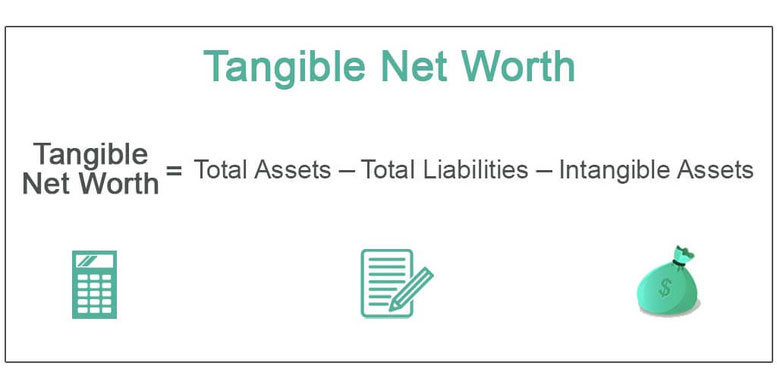A Comparative Study: Highest and Lowest Student Debt Balances Across U.S. Cities
Jan 16, 2024 By Triston Martin
With more and more students taking on loans to finance their college education, understanding the debt load they face upon graduating is becoming increasingly important. This comparative study will explore which cities in the U.S. have the highest or lowest student loan balances for recent graduates, drawing together insights from a variety of studies to help us understand what these figures mean for current students and future generations. Understanding where student debt concentrations are greatest can help focus government policy around alleviating financial hardships in those areas, as well as direct discussion towards finding ways of decreasing student loan balances while providing sufficient access to education opportunities for everyone.
Overview of student debt in the U.S:
Student debt is a growing concern in the United States, affecting millions of individuals each year. As tuition costs continue to rise, students are taking out more loans to finance their education, resulting in crippling debt after graduation.
In fact, the total amount of student debt in the country has surpassed $1.7 trillion, making it the second-highest consumer debt category after mortgages. This burden not only impacts the financial stability of graduates but also their mental and emotional well-being.
As we navigate the complexities of student debt, it is crucial to recognize the gravity of the issue and seek solutions to alleviate this burden for future generations.
Ranking the highest and lowest student debt balances by city:
As the cost of higher education continues to rise across the country, student debt has become a hot topic issue. In fact, according to a recent study, the total amount of student loan debt in the United States has reached a staggering $1.56 trillion.
To gain a better understanding of the impact of this issue on a local level, a study was conducted to rank the cities with the highest and lowest student debt balances.
The results were eye-opening, with some cities reporting average student debt balances of over $50,000 while others reported averages as low as $15,000. With this information, policymakers and individuals alike can work towards finding better solutions to combat the student debt crisis.
Breaking down the average student loan debt amounts for each city:

For recent graduates, one of the most pressing concerns is the looming burden of student loan debt. But how much debt are we talking about, and where are borrowers being hit the hardest? It turns out that the average student loan debt can vary widely depending on where you call home.
Some cities, like San Francisco, have an average student loan debt of over $40,000, while others, like Oklahoma City, average around $20,000. Breaking down these numbers by city offers insight into the realities of the student loan crisis and underscores the importance of being informed and responsible when it comes to borrowing for education.
Analyzing factors that influence student loan debt balances across cities:
The burden of student loan debt is an issue facing millions of Americans, and the weight of this financial burden varies greatly across cities. Several factors contribute to these varying debt balances, including the cost of living, availability of higher education options, and the job market.
By analyzing these factors, we can gain a better understanding of why some cities have higher student loan debt balances than others. This information has the potential to help policymakers and educators develop solutions to alleviate the strain of student loan debt and pave the way for a brighter financial future for all students.
Examining strategies to reduce the financial burden of student loans:
As higher education costs continue to rise, many students are left with a burden of debt that can take years to pay off. Fortunately, there are strategies that can help alleviate the financial strain of student loans.
- One approach is to explore alternative financing options such as scholarships, grants, and work-study programs.
- Another approach is to consider refinancing or consolidating student loans to reduce monthly payments and interest rates.
It's essential to have a plan in place for paying off loans, including creating a budget and exploring loan forgiveness programs for graduates who pursue certain career paths.
Exploring ways to pay off your student loans faster, regardless of location:

Paying off student loans can feel like an overwhelming task, but there are ways to tackle them faster. No matter where you are located, there are options to reduce the amount of interest you pay and accelerate your payment plan.
Refinancing your loans to a lower interest rate can save you thousands over the life of the loan. Making extra payments or rounding up your payment each month can also help shave off time from your repayment journey.
Consider putting any windfalls or extra income towards your student debt. With a little bit of strategy and perseverance, you can take control of your student loans and move towards financial freedom.
Conclusion:
All in all, easing the burden of student loan debt is a daunting task--especially considering the barely manageable amount of student debt that currently exists throughout the United States. There are plenty of tools and resources available to help reduce or even eliminate your student loan debt altogether. Many cities across the U.S. have residents with higher or lower amounts of average student loan debt than others—but regardless, it is important that borrowers make sure to keep up with their payments and stay on top of what they owe in order to gain financial freedom. Taking a look at different strategies to tackle student loans can be even more helpful for those trying to pay off their debt quickly and efficiently.
FAQs:
What is the average student loan debt in the United States?
The total amount of student loan debt in the United States is currently over $1.7 trillion.
How can I reduce my student loan debt?
There are several strategies that can help you reduce your student loan debt, such as refinancing or consolidating your loans to a lower interest rate, making extra payments or rounding up your payment each month, and putting any windfalls or extra income towards your student debt.
What does refinancing my student loans mean?
Refinancing your student loans means taking out a new loan to pay off your existing student loan. This may allow you to receive a lower interest rate and reduce the total amount of money that you owe. It's important to do research and compare different lenders before making any decisions.
-
 Know-how Jan 08, 2024
Know-how Jan 08, 2024A Quick Guide: How to Calculate Your Tangible Net Worth?
When calculating net worth, it is necessary to consider all possible debts and deduct them from the value of the assets. Despite the apparent ease of the procedure, the major challenge here is determining the maximum value of all potential assets and liabilities. This challenge might be exacerbated by a lack of or incorrect understanding of basic financial principles.
-
 Banking Dec 05, 2023
Banking Dec 05, 2023What Is an Escrow Holdback
Understand all the details of an escrow holdback when closing a real estate sale. Learn about establishing, releasing, and different types of holdbacks!
-
 Taxes Mar 16, 2024
Taxes Mar 16, 2024The Role of Tax Credit in Promoting Renewable Energy
Do you want to know about the renewable energy tax credits? In this article, we have discussed types of tax credits and their benefits in creating a cleaner environment
-
 Taxes Mar 15, 2024
Taxes Mar 15, 20245 Game-Changing Tech Innovations for Strengthening Corporate Tax Teams
Do you want to make your corporate tax team stronger? Give this article a thorough read to discover the top 5 powerful ways technology can strengthen your operations.
